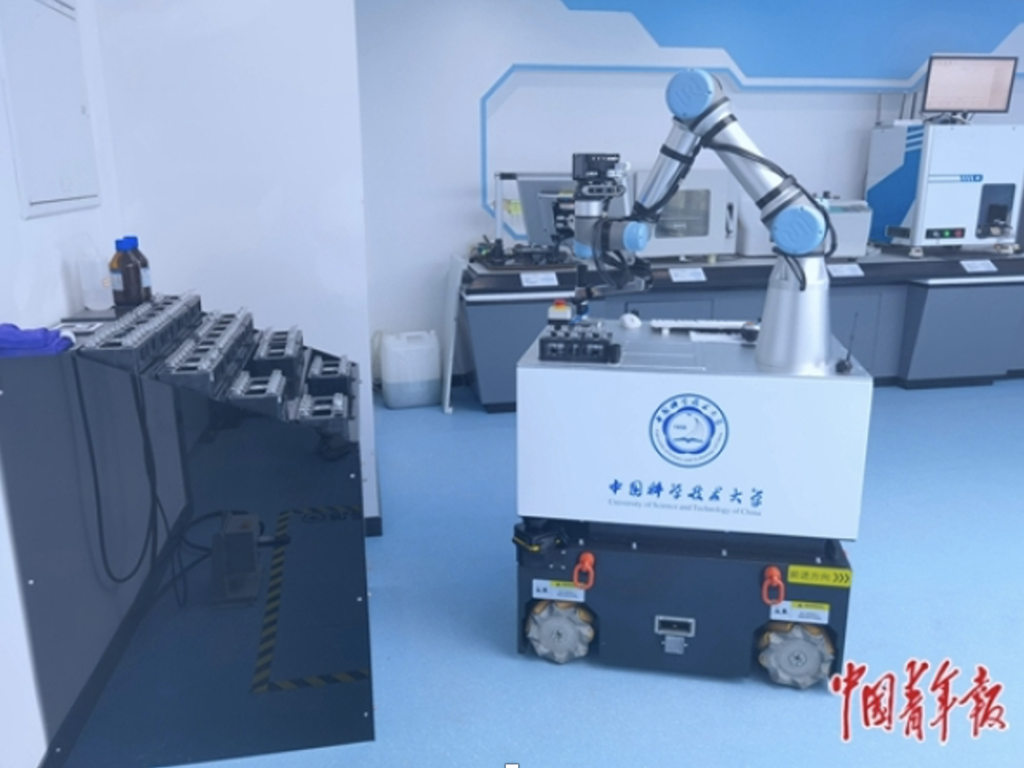https://www.cas.cn/cm/202210/t20221006_4849823.shtml
https://www.cas.cn/cm/202210/t20221017_4851384.shtml
https://academic.oup.com/nsr/advance-article/doi/10.1093/nsr/nwac190/6694008
A team led by Professors Luo Yi and Jiang Jun at the University of Science and Technology of China in Hebei aims to revolutionize catalyst research with an autonomous laboratory for high-throughput synthesis, characterization and testing. The equipment includes extensive databases and algorithms, two mobile robots, 15 workstations for high-throughput experiments including photo- and electrocatalytic substeps, and an open operating system that also maintains standard interfaces for scaling.
In depth: a young research team from the CAS University of Science and Technology of China (USTC) around Professors Luo Yi and Jiang Jun from the School of Chemistry and Materials Science and Weiwei Shang from the Department of Automation has developed and integrated mobile robots, chemistry workstations, and other robots to develop “Data-Driven Robot Scientists in Chemistry, Materials, and Biosciences”. The team has developed and integrated mobile robots, chemical workstations, intelligent operating systems, and scientific databases to develop a data-intelligence-driven full-process robot chemist. The machine chemist platform realizes the whole process development of chemical synthesis-characterization-testing driven by both big data and intelligent models, and contains a computational brain, theoretical models and open operating system. It also covers photocatalytic and electrocatalytic materials, luminescent molecules, and optical thin film materials.
The machine chemist platform can use machine intelligence to find and read literature, draw expert experience from massive research data, propose scientific hypotheses and develop experimental plans based on previous knowledge and data; dispatch 2 mobile robots and 15 self-developed intelligent chemical workstations to complete the whole process of chemical experiments of high-throughput synthesis, characterization and testing, and reserve standard interfaces for scalability. The unique computational brain integrates intelligent models into the underlying theoretical laws and complex chemical experimental evolution by calling physical models, theoretical calculations, machine learning and Bayesian optimization, so that machine scientists can understand chemistry better and be better at chemical creation.
According to the research team, the object of chemical research is becoming increasingly complex and high-dimensional, and the traditional research paradigm mainly relies on “exhaustive” and “trial-and-error” means. In the face of a large chemical space, the search for formulations and processes often stops at local optimality, and global exploration is not possible. For example, the high potential of high-entropy (highly complex, highly disordered) compound catalysts, where the highly disordered mixing of multiple elements brings high stability, also poses a great challenge for manual testing to find the optimal ratio. Obtaining the optimal formulation requires iterative testing of extremely large combinations of chemical ratios, currently limited to optimization of up to three metal combinations.
The newly developed machine chemist takes advantage of its data-driven and intelligent optimization to intelligently read 16,000 papers and independently select 5 non-precious metal elements, fuse 20,000 sets of theoretical calculation data and 207 sets of full-process machine experimental data to build an intelligent model that integrates theory and reality, and guide the Bayesian optimization program to find the optimal high-entropy catalyst from 550,000 possible metal ratios. This shortens the 1400 years required for the traditional “frying” traversal search to 5 weeks.

